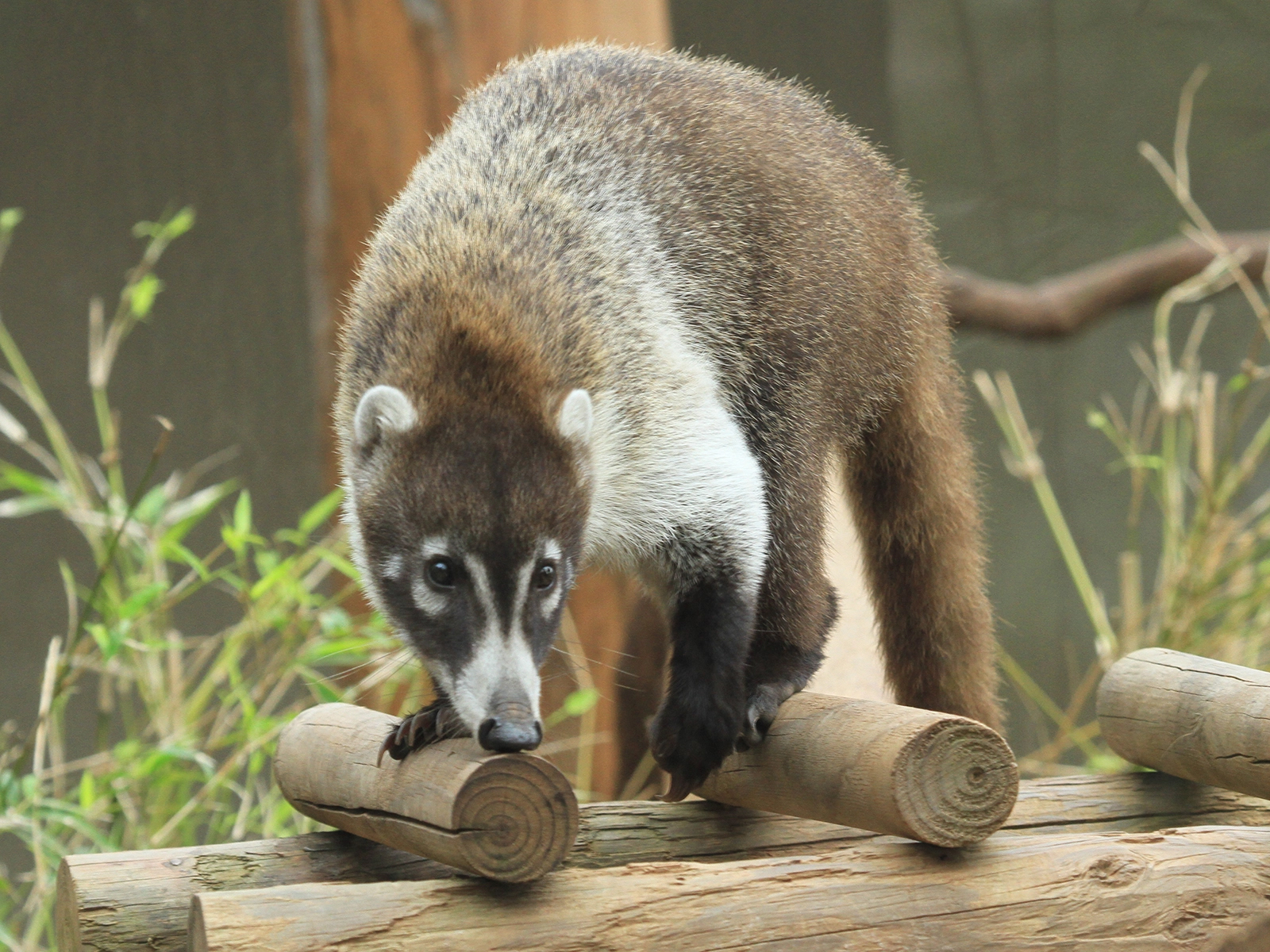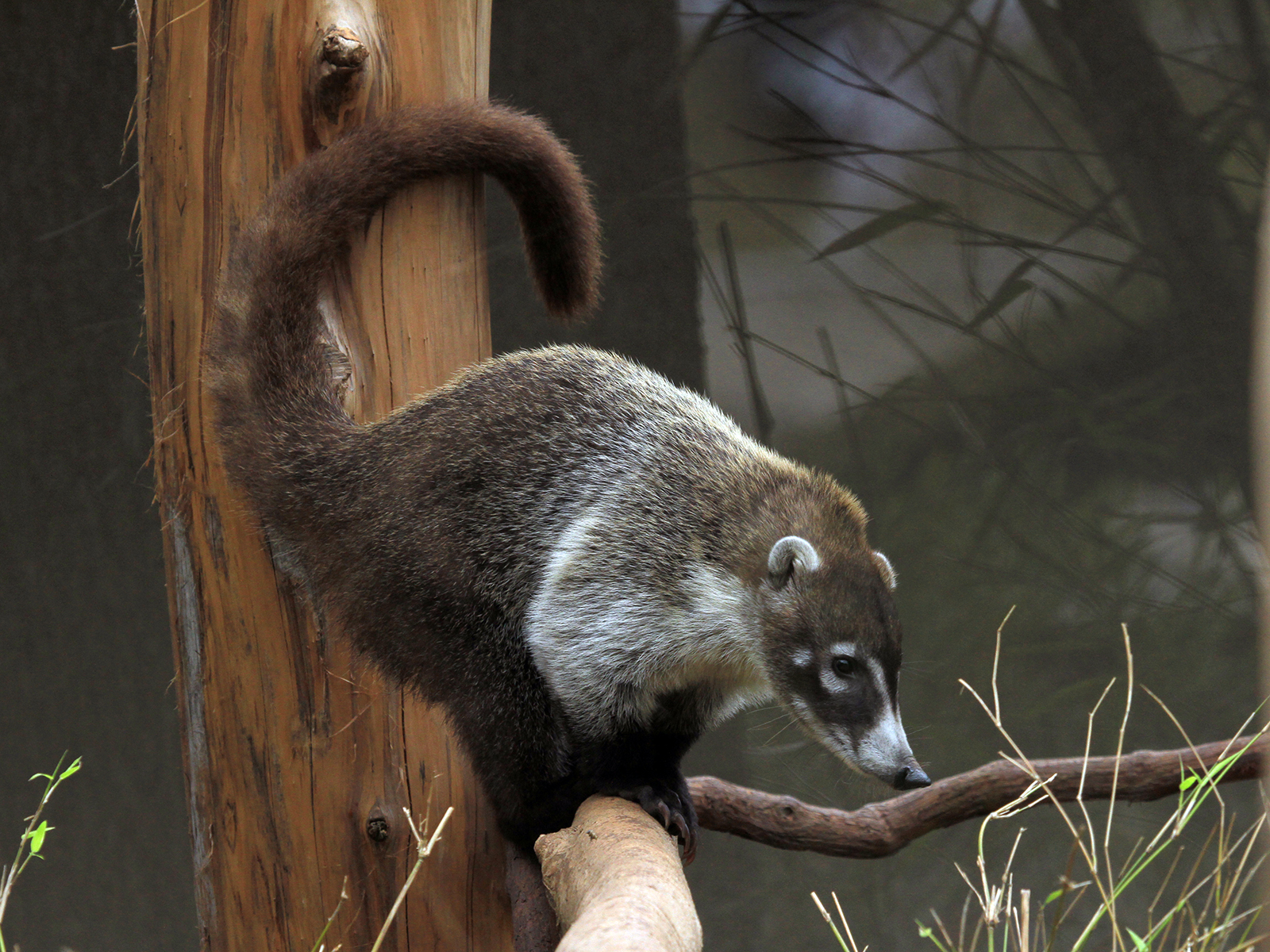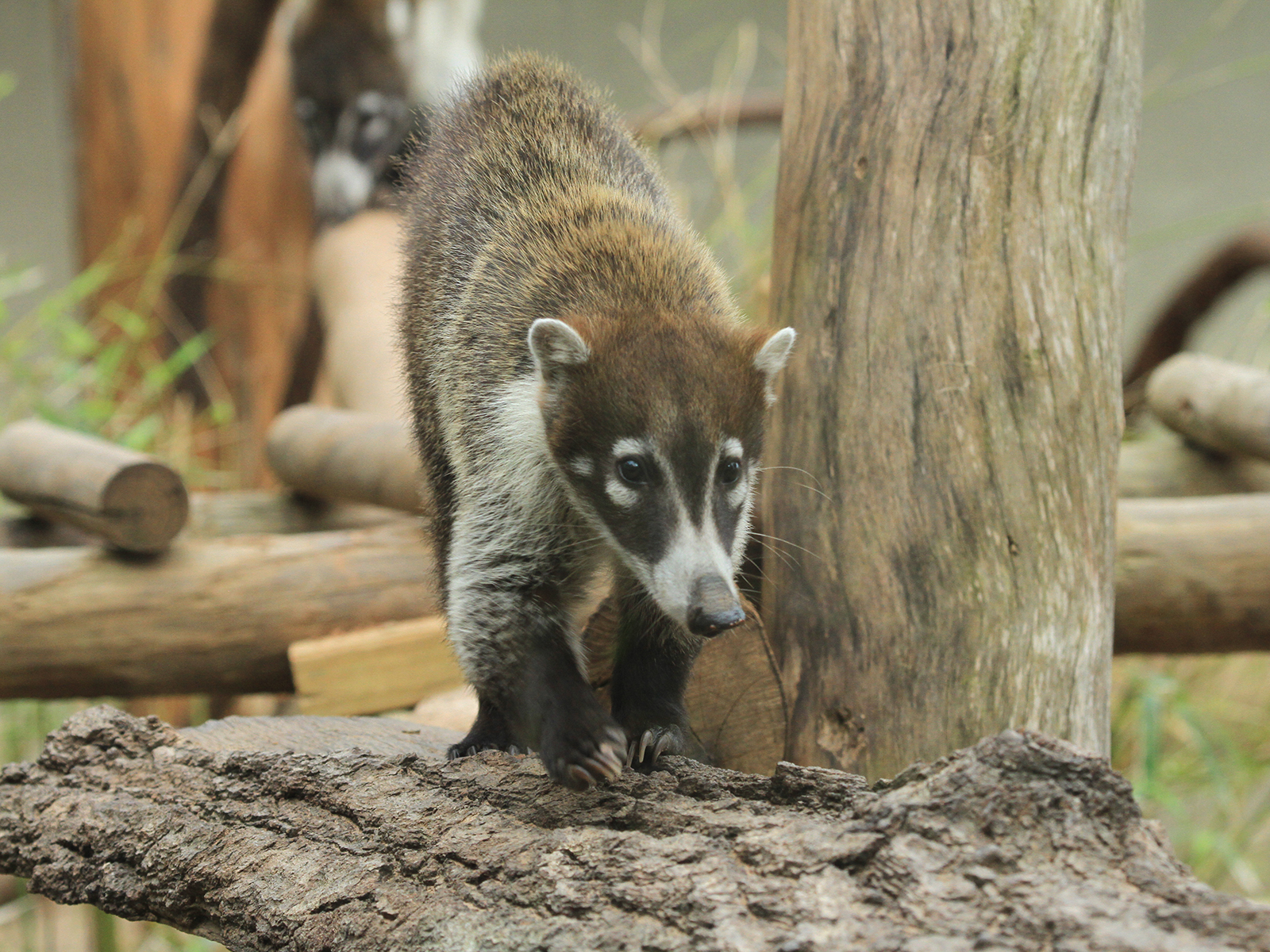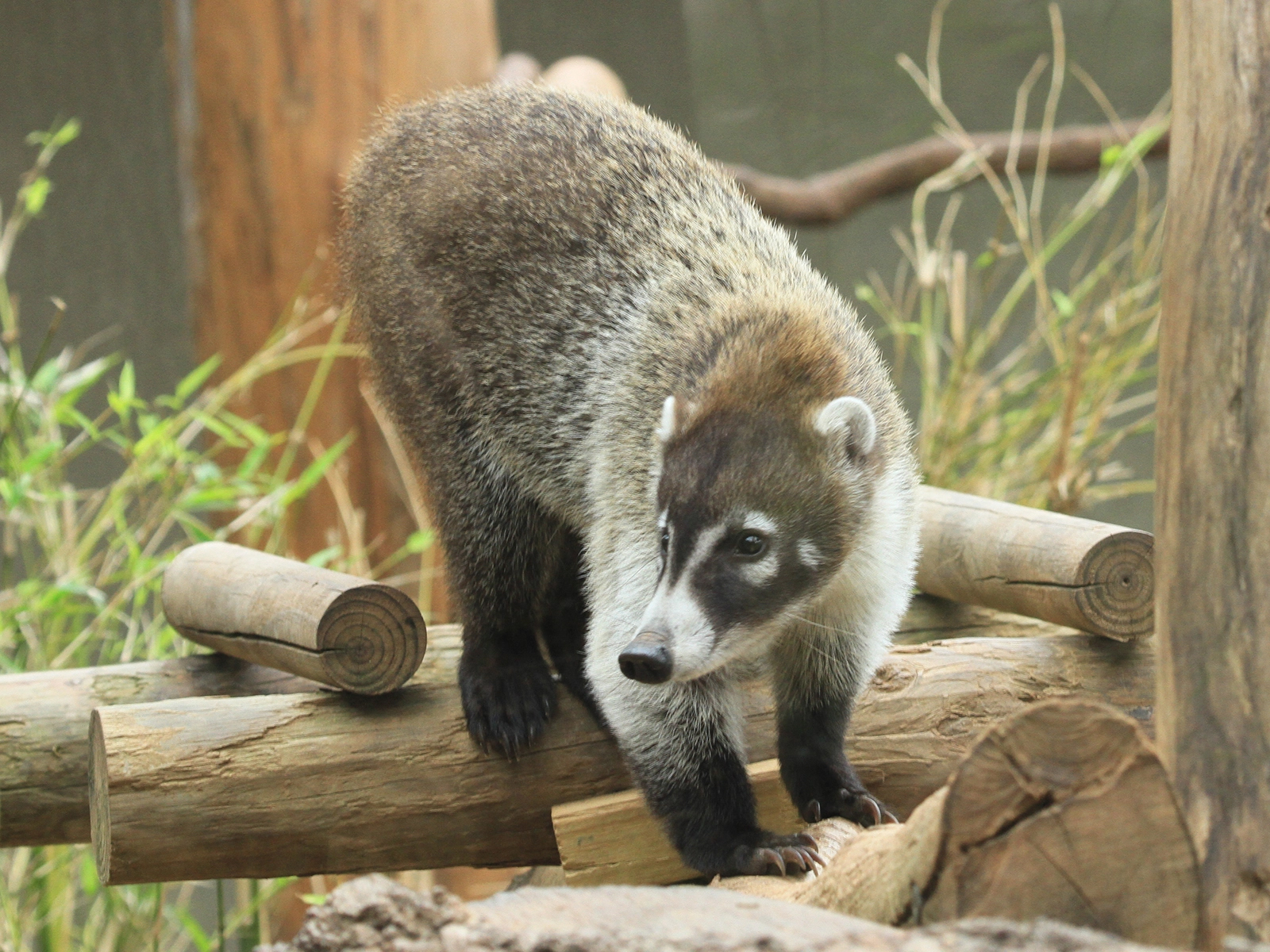White-nosed Coati
Nasua narica
Class
Mammalia
Order
Carnivora
Family
Procyonidae

Mammalia
Carnivora
Procyonidae
Arizona, south to Argentina
Length: 3 - 4 ft
Weight: 6.5 - 13 lbs
Found in a variety of habitats, including dry, open forests and tropical woodlands
Litter: 2 - 7 kits
Gestation: 10 - 11 weeks
Fruit, invertebrates, small rodents, and lizards
Least Concern

Their long, slightly upturned nose can rotate up to 60 degrees in any direction. Their thick, semi-prehensile tails are used for balance and is often held erect above the body. They have strong claws for digging. A coatimundi’s ankles rotate 180 degrees, enabling it to climb down a tree head first.

Females live in groups, called bands, along with their young, including males up to two years old. Adult males are solitary, except during the breeding season. Young are weaned at four months and reach adult size at 15 months.

The biggest threats to coatis are habitat loss and hunting. They are hunted for meat and pelts, and sometimes caught in traps or killed by hunters targeting other animals. While they have natural predators like big cats, boas, and large birds, diseases like distemper and rabies can also affect their populations.
Choose your pets wisely. Before you get a pet, do your research as many require special care and have long lifespans. Exotic animals don't always make good companions. The demand for exotic pets drives the illegal wildlife trade. If you are considering an exotic pet, ensure it is from a reputable, legal breeder and never from the wild.
Frida: Born May 31, 2022
Maria: Born May 28, 2022